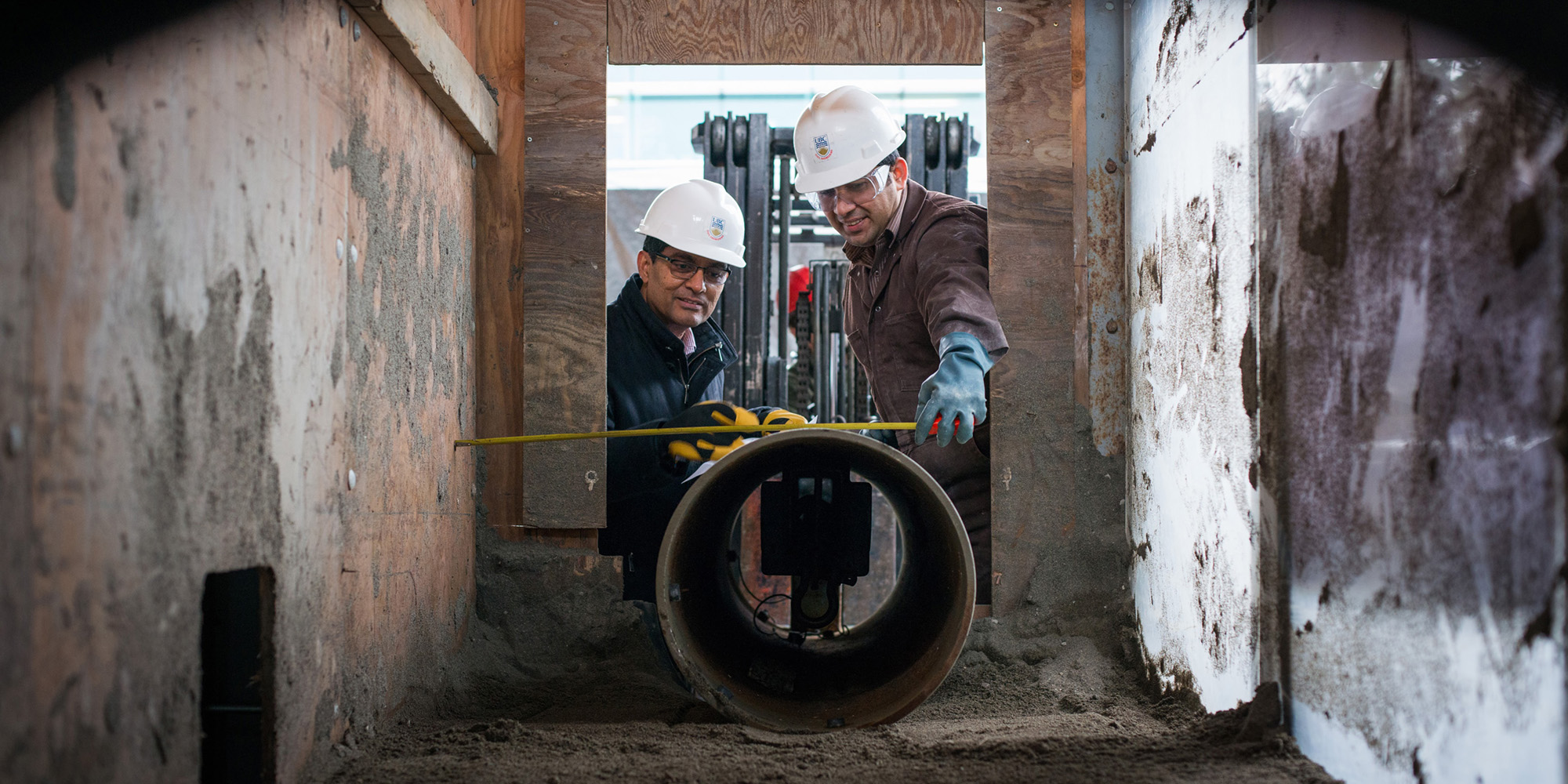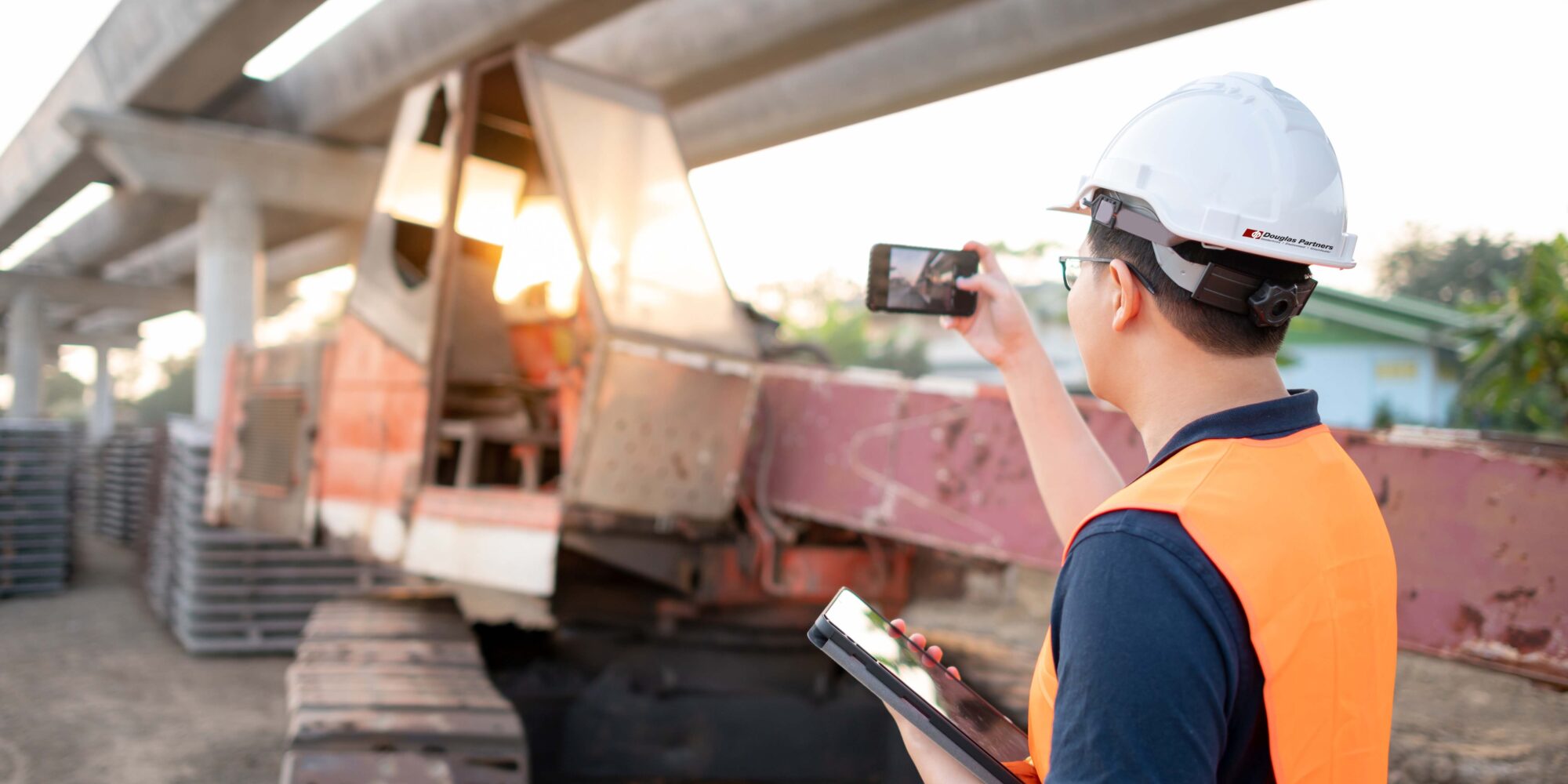Essential Abilities for Prospering in the Geotechnical Industry Today
Wiki Article
A Detailed Review of the Key Duties of Geotechnical Designers in Site Characterization and Ground Enhancement Strategies for Design Solutions
Geotechnical engineers are essential to the successful implementation of design jobs, entrusted with the critical responsibilities of site characterization and the application of ground renovation strategies. Their job entails an extensive evaluation of subsurface problems, employing different testing techniques to determine soil and rock homes. This foundational understanding not only educates style choices however also alleviates potential dangers related to ground instability. As we discover the complex functions of these specialists, it becomes noticeable how their knowledge forms the safety and security and performance of engineering options. What specific strategies and assessments stand apart in this essential discipline?Function of Geotechnical Designers
Geotechnical engineers play a critical duty in the design and building and construction of framework by evaluating the habits of soil and rock under the surface area - geo tech engineering. Their obligations incorporate reviewing subsurface problems to notify style decisions that ensure architectural stability and safety and security. By carrying out detailed analyses of dirt residential properties, consisting of shear strength, permeability, and compressibility, geotechnical engineers provide critical data that affects the option of proper building materials and strategiesIn enhancement to examining soil technicians, geotechnical engineers are tasked with determining prospective hazards such as landslides, sinkholes, and ground settlements. Their proficiency aids mitigate risks connected with these geotechnical sensations, thereby securing both the environment and public safety and security. They also team up carefully with various other engineering disciplines, making certain that geotechnical considerations are integrated right into overall job layout.
Additionally, geotechnical engineers participate in the assessment of existing structures, providing recommendations for retrofitting and repairs when needed. Their thorough understanding of soil-structure communication is essential for the advancement of lasting framework options. On the whole, the role of geotechnical designers is essential to the successful realization of building projects, ensuring they are secure, sturdy, and certified with governing requirements.

Website Characterization Processes
Effective website characterization processes are necessary for understanding the subsurface problems that influence task style and execution. Geotechnical designers employ an organized strategy to collect, review, and interpret information pertaining to soil, groundwater, and rock features. This procedure begins with a thorough testimonial of existing literature and historic website data, providing insights into previous site conditions and potential obstacles.
Information analysis adheres to fieldwork, where engineers use geostatistical approaches to analyze findings and produce geological designs. Via persistent site characterization, geotechnical engineers lay the groundwork for successful job implementation, minimizing unexpected difficulties and maximizing resource allowance.
Dirt and Rock Screening Techniques
While comprehending subsurface conditions is crucial, the choice of proper soil and rock testing techniques is just as vital for accurate analysis and design. Geotechnical designers employ a selection of testing techniques to assess the physical and mechanical buildings of dirt and rock materials.Lab tests, such as Atterberg restrictions, grain size analysis, and unconfined compressive toughness tests, supply vital data on soil behavior under different dampness conditions and packing circumstances. These examinations help figure out dirt classification and forecast negotiation or shear toughness characteristics crucial for foundation layout.
In-situ screening techniques, including Criterion Penetration Tests (SPT), Cone Infiltration Examinations (CPT), and pressure meter tests, allow designers to collect information straight from the ground. These techniques supply useful insights right into the soil's density, uniformity, and stratification without the requirement for extensive tasting.
Rock screening normally involves core sampling and laboratory evaluation to examine buildings like uniaxial compressive strength and rock quality classification (RQD) With each other, these dirt and rock screening techniques enable geotechnical engineers to make informed choices pertaining to site-specific challenges, making sure the security and security of design solutions.
Ground Renovation Strategies
Ground improvement techniques are necessary for boosting the design residential properties of soil, therefore boosting its load-bearing capability and decreasing negotiation. These techniques are vital in addressing difficulties provided by weak or bothersome dirts, which can substantially influence the stability and toughness of structures.Different ground renovation methods are used, including compaction, grouting, and soil stabilization. Grouting, on the various other hand, entails injecting a fluid product right into the ground to fill voids and enhance dirt cohesion.
Soil stablizing encompasses a range of approaches, from chemical additives civil consulting engineers to mechanical therapies, focused on boosting the dirt's resistance to erosion and deformation. Strategies such as lime stabilization or cement blending modify the buildings of the dirt at a particle level, boosting its general efficiency.
Importance of Geotechnical Analyses
Geotechnical assessments play an important function in the preparation and style of design jobs, as they provide important information about the subsurface conditions. Understanding soil properties, rock formations, groundwater levels, and possible geohazards is essential for guaranteeing the stability and safety and security of frameworks. These assessments allow designers to make educated decisions pertaining to website choice, layout criteria, and building and construction methods.
The value of geotechnical analyses prolongs past preliminary task stages; they are critical in risk management and cost efficiency. By determining potential concerns early, such as dirt settlement, slope instability, or excessive groundwater, designers can design suitable reduction techniques, lowering the likelihood of architectural failures and costly delays. These analyses support conformity with governing needs and improve the sustainability of engineering techniques.

Verdict
In final thought, geotechnical designers are important to making certain the safety and security of engineering jobs via extensive website characterization and ground enhancement strategies. geotechnical industry. Their systematic technique to assessing subsurface conditions, incorporated with their recommendations for efficient ground modification, substantially enhances dirt residential properties and load-bearing capacity. The expertise of geotechnical engineers not only facilitates informed project planning however likewise makes sure compliance with policies and promotes reliable interaction amongst stakeholders, eventually adding to effective engineering end resultsGeotechnical designers play a pivotal duty in the layout and construction of infrastructure by assessing the habits of dirt and rock below the surface. By carrying out detailed evaluations of dirt buildings, including shear compressibility, strength, and permeability, geotechnical designers supply crucial information that affects the selection of suitable building and construction materials and strategies.
In enhancement to examining dirt technicians, geotechnical engineers are charged with recognizing possible threats such as landslides, sinkholes, and ground negotiations. Geotechnical engineers employ an organized strategy to gather, review, and interpret data concerning soil, rock, and groundwater qualities. By determining potential issues early, such as dirt settlement, slope instability, or extreme groundwater, designers can create ideal reduction techniques, reducing the likelihood of pricey hold-ups and structural failings.
Report this wiki page